Students can use the Spectrum Math Grade 8 Answer Key Chapter 5 Lesson 5.1 Transformations: Translations as a quick guide to resolve any of their doubts.
Spectrum Math Grade 8 Chapter 5 Lesson 5.1 Transformations: Translations Answers Key
A transformation is a type of function that describes a change in the position, size, or shape of a figure.
A translation is a slide of a figure. The figure can be slid up, down, or sideways. However, the size, shape, and orientation of the figure remain the same.
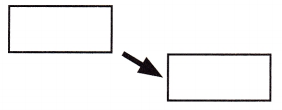
This figure has been translated down and to the right.
State if the figures below represent a translation by writing yes or no.
Question 1.
a.
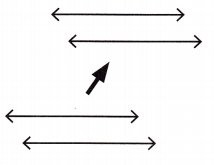
_______
Answer: yes
The above figure has been translated.
A transformation is a type of function that describes a change in the position, size, or shape of a figure.
A translation is a slide of a figure. The figure can be slid up, down, or sideways. However, the size, shape, and orientation of the figure remain the same.
b.
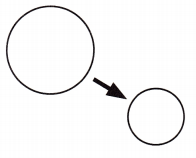
________
Answer: No
The above figure has not been translated.
A transformation is a type of function that describes a change in the position, size, or shape of a figure.
A translation is a slide of a figure. The figure can be slid up, down, or sideways. However, the size, shape, and orientation of the figure remain the same.
c.
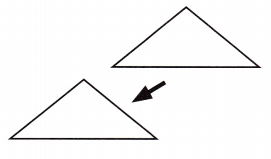
_______
Answer: yes
The above figure has been translated.
A transformation is a type of function that describes a change in the position, size, or shape of a figure.
A translation is a slide of a figure. The figure can be slid up, down, or sideways. However, the size, shape, and orientation of the figure remain the same.
Question 2.
a.
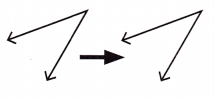
_______
Answer: yes
The above figure has been translated.
A transformation is a type of function that describes a change in the position, size, or shape of a figure.
A translation is a slide of a figure. The figure can be slid up, down, or sideways. However, the size, shape, and orientation of the figure remain the same.
b.
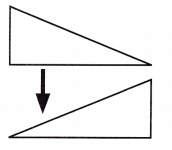
_______
Answer: no
The above figure has not been translated.
A transformation is a type of function that describes a change in the position, size, or shape of a figure.
A translation is a slide of a figure. The figure can be slid up, down, or sideways. However, the size, shape, and orientation of the figure remain the same.
c.

_______
Answer: no
The above figure has not been translated.
A transformation is a type of function that describes a change in the position, size, or shape of a figure.
A translation is a slide of a figure. The figure can be slid up, down, or sideways. However, the size, shape, and orientation of the figure remain the same.
Question 3.
a.
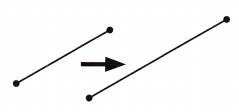
________
Answer: no
The above figure has not been translated.
A transformation is a type of function that describes a change in the position, size, or shape of a figure.
A translation is a slide of a figure. The figure can be slid up, down, or sideways. However, the size, shape, and orientation of the figure remain the same.
b.
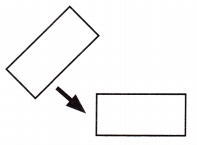
________
Answer: yes
The above figure has been translated.
A transformation is a type of function that describes a change in the position, size, or shape of a figure.
A translation is a slide of a figure. The figure can be slid up, down, or sideways. However, the size, shape, and orientation of the figure remain the same.
c.
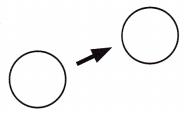
________
Answer: yes
The above figure has been translated.
A transformation is a type of function that describes a change in the position, size, or shape of a figure.
A translation is a slide of a figure. The figure can be slid up, down, or sideways. However, the size, shape, and orientation of the figure remain the same.
A transformation is a type of function that describes a change in the position, size, or shape of a figure.
A reflection is a flip of a figure. It can be flipped to the side, up, or down.
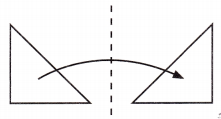
This figure has been flipped horizontally over the dotted line.
State if the figures below represent a reflection by writing yes or no.
Question 1.
a.
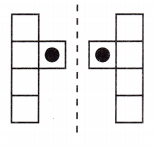
_______
Answer: yes
The above figure has been flipped over the dotted line.
A transformation is a type of function that describes a change in the position, size, or shape of a figure.
A reflection is a flip of a figure. It can be flipped to the side, up, or down.
b.
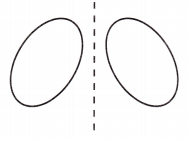
_______
Answer: yes
The above figure has been flipped over the dotted line.
A transformation is a type of function that describes a change in the position, size, or shape of a figure.
A reflection is a flip of a figure. It can be flipped to the side, up, or down.
c.
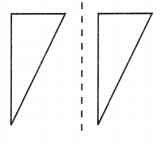
_______
Answer: no
The above figure has not been flipped over the dotted line.
A transformation is a type of function that describes a change in the position, size, or shape of a figure.
A reflection is a flip of a figure. It can be flipped to the side, up, or down.
Question 2.
a.
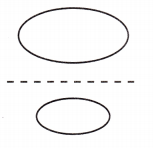
_______
Answer: no
The above figure has not been flipped over the dotted line.
A transformation is a type of function that describes a change in the position, size, or shape of a figure.
A reflection is a flip of a figure. It can be flipped to the side, up, or down.
b.
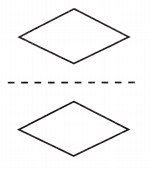
_______
Answer: yes
The above figure has been flipped over the dotted line.
A transformation is a type of function that describes a change in the position, size, or shape of a figure.
A reflection is a flip of a figure. It can be flipped to the side, up, or down.
c.
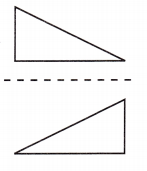
_______
Answer: no
The above figure has not been flipped over the dotted line.
A transformation is a type of function that describes a change in the position, size, or shape of a figure.
A reflection is a flip of a figure. It can be flipped to the side, up, or down.
Question 3.
a.
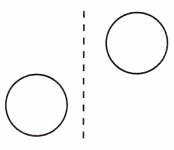
_______
Answer: no
The above figure has not been flipped over the dotted line.
A transformation is a type of function that describes a change in the position, size, or shape of a figure.
A reflection is a flip of a figure. It can be flipped to the side, up, or down.
b.
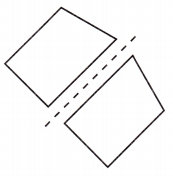
_______
Answer: yes
The above figure has been flipped over the dotted line.
A transformation is a type of function that describes a change in the position, size, or shape of a figure.
A reflection is a flip of a figure. It can be flipped to the side, up, or down.
c.
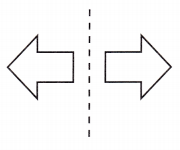
_______
Answer: yes
The above figure has been flipped over the dotted line.
A transformation is a type of function that describes a change in the position, size, or shape of a figure.
A reflection is a flip of a figure. It can be flipped to the side, up, or down.
A transformation is a type of function that describes a change in the position, size, or shape of a figure.
A rotation is a turn of a figure. The figure can be rotated any number of degrees.
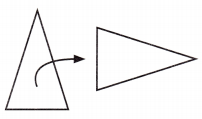
This figure has been rotated 90° clockwise about the point. This point is called the center of rotation.
State if the figures below represent a rotation by writing yes or no.
Question 1.
a.
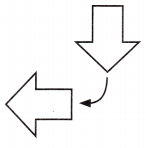
______
Answer: yes
The above figure has been rotated clockwise about the point. This point is called the center of rotation.
A transformation is a type of function that describes a change in the position, size, or shape of a figure.
A rotation is a turn of a figure. The figure can be rotated any number of degrees.
b.
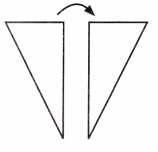
________
Answer: no
The above figure has not been rotated clockwise about the point.
A transformation is a type of function that describes a change in the position, size, or shape of a figure.
A rotation is a turn of a figure. The figure can be rotated any number of degrees.
c.
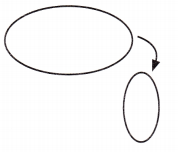
_______
Answer: no
The above figure has not been rotated clockwise about the point.
A transformation is a type of function that describes a change in the position, size, or shape of a figure.
A rotation is a turn of a figure. The figure can be rotated any number of degrees.
Question 2.
a.
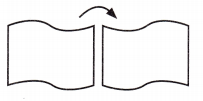
______
Answer: no
The above figure has not been rotated clockwise about the point.
A transformation is a type of function that describes a change in the position, size, or shape of a figure.
A rotation is a turn of a figure. The figure can be rotated any number of degrees.
b.
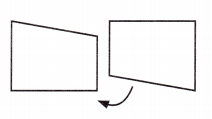
Answer: yes
The above figure has been rotated clockwise about the point. This point is called the center of rotation.
A transformation is a type of function that describes a change in the position, size, or shape of a figure.
A rotation is a turn of a figure. The figure can be rotated any number of degrees.
c.
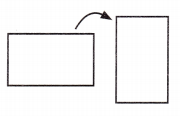
Answer: yes
The above figure has been rotated clockwise about the point. This point is called the center of rotation.
A transformation is a type of function that describes a change in the position, size, or shape of a figure.
A rotation is a turn of a figure. The figure can be rotated any number of degrees.
Question 3.
a.
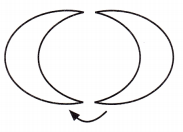
Answer: yes
The above figure has been rotated clockwise about the point. This point is called the center of rotation.
A transformation is a type of function that describes a change in the position, size, or shape of a figure.
A rotation is a turn of a figure. The figure can be rotated any number of degrees.
b.
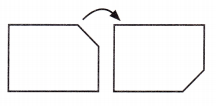
Answer: no
The above figure has not been rotated clockwise about the point.
A transformation is a type of function that describes a change in the position, size, or shape of a figure.
A rotation is a turn of a figure. The figure can be rotated any number of degrees.
c.
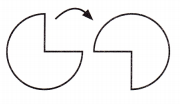
Answer: yes
The above figure has been rotated clockwise about the point. This point is called the center of rotation.
A transformation is a type of function that describes a change in the position, size, or shape of a figure.
A rotation is a turn of a figure. The figure can be rotated any number of degrees.
State if the figures below represent a rotation, reflection, or translation.
Question 1.
a.

Answer: Reflection
The above figure has been flipped.
A transformation is a type of function that describes a change in the position, size, or shape of a figure.
A reflection is a flip of a figure. It can be flipped to the side, up, or down.
b.
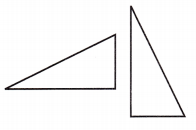
Answer: Rotation
The above figure has been rotated clockwise about the point. This point is called the center of rotation.
A transformation is a type of function that describes a change in the position, size, or shape of a figure.
A rotation is a turn of a figure. The figure can be rotated any number of degrees.
c.
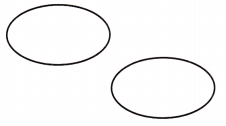
Answer: Translation
A transformation is a type of function that describes a change in the position, size, or shape of a figure.
A translation is a slide of a figure. The figure can be slid up, down, or sideways. However, the size, shape, and orientation of the figure remain the same.
Question 2.
a.
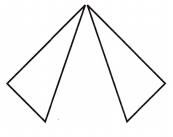
Answer: Reflection
The above figure has been flipped.
A transformation is a type of function that describes a change in the position, size, or shape of a figure.
A reflection is a flip of a figure. It can be flipped to the side, up, or down.
b.

Answer: Reflection
The above figure has been flipped.
A transformation is a type of function that describes a change in the position, size, or shape of a figure.
A reflection is a flip of a figure. It can be flipped to the side, up, or down.
c.
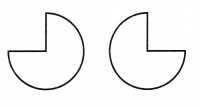
Answer: Reflection
The above figure has been flipped.
A transformation is a type of function that describes a change in the position, size, or shape of a figure.
A reflection is a flip of a figure. It can be flipped to the side, up, or down.
Question 3.
a.
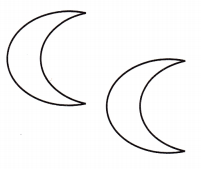
Answer: Translation
A transformation is a type of function that describes a change in the position, size, or shape of a figure.
A translation is a slide of a figure. The figure can be slid up, down, or sideways. However, the size, shape, and orientation of the figure remain the same.
b.

Answer: Reflection
The above figure has been flipped.
A transformation is a type of function that describes a change in the position, size, or shape of a figure.
A reflection is a flip of a figure. It can be flipped to the side, up, or down.
c.
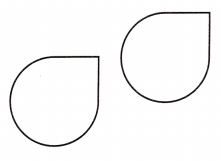
Answer: Translation
A transformation is a type of function that describes a change in the position, size, or shape of a figure.
A translation is a slide of a figure. The figure can be slid up, down, or sideways. However, the size, shape, and orientation of the figure remain the same.
Question 4.
a.

Answer: Rotation
The above figure has been rotated clockwise about the point. This point is called the center of rotation.
A transformation is a type of function that describes a change in the position, size, or shape of a figure.
A rotation is a turn of a figure. The figure can be rotated any number of degrees.
b.
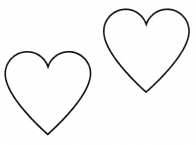
Answer: Translation
A transformation is a type of function that describes a change in the position, size, or shape of a figure.
A translation is a slide of a figure. The figure can be slid up, down, or sideways. However, the size, shape, and orientation of the figure remain the same.
c.
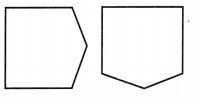
Answer: Rotation
The above figure has been rotated clockwise about the point. This point is called the center of rotation.
A transformation is a type of function that describes a change in the position, size, or shape of a figure.
A rotation is a turn of a figure. The figure can be rotated any number of degrees.